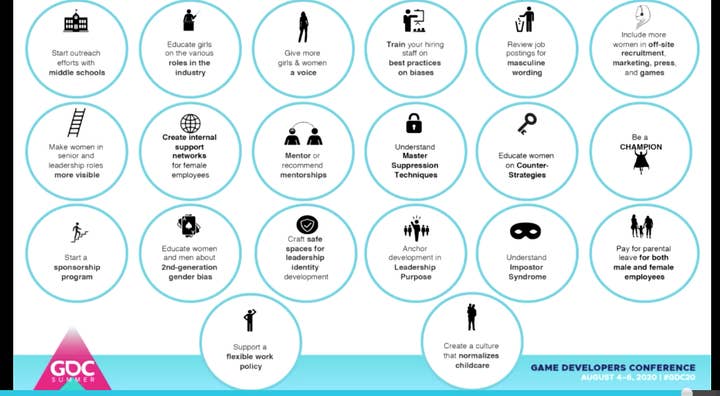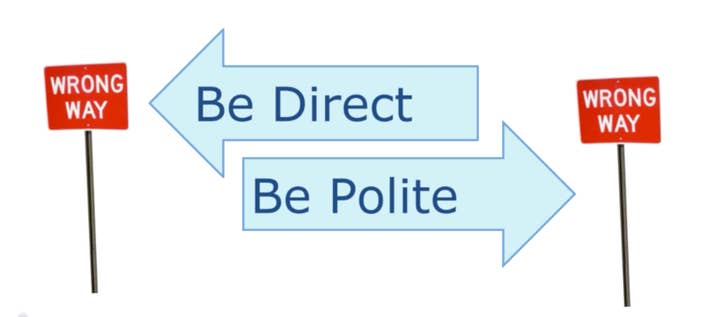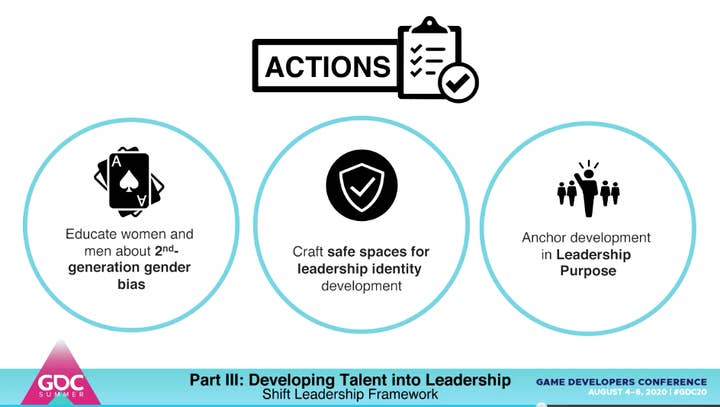Retaining and fostering women in the games industry
Victoria Setian gave a GDC Summer talk addressing how to fight discriminatory attitudes in the workplace and develop female talent into leadership
When addressing the topic of the lack of women in the games industry, companies tend to focus on what can be done to bring more women on board.
Reaching out to schools to show that games is a career girls can pursue, making space for young women to take part in work experience schemes or internships, giving more women a voice in games; these are all great strategies that every studio should apply to work towards parity.
But the topic of retention is one that's less often discussed. Working in a male-dominated environment can take its toll, and women may naturally be seeking opportunities elsewhere if they don't feel comfortable with the environment they're in. The fight for parity doesn't stop at getting more women on board -- the industry also needs to actively work towards retaining their talent.

Senior producer at Avalanche Studios Victoria Setian touched upon retention in a GDC Summer talk earlier this year entitled 'Changing the Game: Cultivating Female Talent in AAA Studios.'While she discussed outreach methodologies to attract more women, she also dedicated a big part of her talk to retaining and fostering female talent.
Internal support networks and mentorship programmes were the first two elements she mentioned to create an environment that will help women to thrive. Allowing for flexibility and fair parental leave is also a given, as women are still doing the heavy lifting when it comes to childcare.
But Setian also went more in-depth and explained how to identify and address discriminatory attitudes in the workplace, and showed ways to develop female talent into leadership. And while her advice was primarily aimed at AAA studios, there were a lot of elements in her talk that can be applied to studios of all sizes.
Master suppression techniques and strategies
To retain and foster women, the right culture needs to be created. If female employees have already left your company, ask yourself what might have been the reason. Looking at your structures and the type of culture you have is always the first step.
You should also listen to the experiences women have gone through and really pay attention to what's going on in your teams; you may be able to identify master suppression techniques.
"Master suppression techniques are strategies people or groups of people can use to dominate or humiliate others in a subtle, indirect way," Setian explained. "In the 1940s, Norwegian psychologist and philosopher Ingjald Nissen first published research on master suppression techniques.
"Most people who use master suppression techniques are not consciously trying to be disruptive or hurtful"
"Decades later, in the 1970s, Norwegian social psychologist Berit Ås did further work on the framework, establishing that they are used in specific combinations and situations in regards to women. There are five techniques and, thanks to the institute of gender equality in Sweden, research was conducted on how to combat these techniques using counter strategies."
Identifying and fighting master suppression techniques is crucial to creating the right environment for women at your studio.
"I just want to point out that most people who use master suppression techniques are not consciously trying to be disruptive or hurtful," Setian added. "These are generally subconscious manoeuvres. So it's really important to [give] people the benefit of the doubt when employing a counter strategy. So if you or the women on your team are trying to employ a counter strategy, I encourage you to please come from a calm and neutral place. We are all human and we all make mistakes."

- Making invisible
The first master suppression technique is called 'making invisible'.
"It's acting like what the speaker is saying isn't important or valuable by drawing attention away," Setian said. "This can be done by interrupting or doing more subtle things like making noises with your chair or being on your phone, a lack of gestures or response.
"The counter strategy is called 'take place.' Stay calm and self assured, and highlight the unacceptable behaviour. 'Hey, would you mind putting your phone away?'"
It's worth mentioning that, if someone gets interrupted during a meeting for instance, 'interrupting the interrupter' is absolutely a strategy that can be applied as well. It's something the GamesIndustry.biz Academy in its guide about how to identify and avoid unconscious bias.
If you're the one being interrupted, calmly say you were not finished. If you see someone else being interrupted, calmly bring back the attention to them and give them the opportunity to resume.
- Ridicule

The next master suppression technique is called 'ridicule.'
"[It's] mocking and laughing at the other person, infantilising or otherwise degrading them," Setian explained. "An example [of] something like this is the phrase 'hysterical women' or 'silly girls.'
"I remember shipping a project -- it had taken a lot of time and energy and effort, and we shipped successfully, the game did very well, and shortly after I was called in a meeting with a room full of all of my peers. There were two male executives in the room. One male executive decided to call attention to the effort that I put into the project. And the other male executive turned to me and patted me on the head.
"I didn't know what master suppression techniques were and I certainly didn't know the counter strategy for what to do in the moment, while I was being ridiculed by someone in leadership. "
The counter strategy is simply called 'question.' Stay calm and ask: why would you say that? Or, in the case of Setian's example: what did you mean by that? Calling something out usually helps the perpetrator to realise it's inappropriate, and will trigger a discussion.
- Withhold information
Next is a master suppression technique called 'withhold information.'
"[It's] not getting access to meetings, documents, news, invitations, etc," Setian said. "The counter strategy is: 'require cards on the table.' Point out the pattern and why it's necessary to have this information to do your job.
"Request that, if you can't attend something, to please reschedule."
- Double bind
Double bind is a master suppression technique that impacts women way beyond the workplace.
"Whatever you do, you are wrong. If you're direct, you're a bitch. If you're a good listener, you're too passive"
"Whatever you do, you are wrong," Setian explained. "If you're direct, you're a bitch. If you're a good listener, you're too passive. The counter strategy here is called: 'change the pattern.' Recognise what your priorities are and what's important to you. Then clarify the rules.
"For example, maybe you can't stay late. You have to pick up your kids or you have some errand to run. So clarify the rules. Say: 'Hey, I need to pick up my kids but I know that this is due tomorrow at two o'clock, and you will have it by the time that you've asked for it.'
"So you're clarifying that you understand what the rules are and that you are working within the bounds of your constraints."

- Heap blame/put to shame
Finally, the last master suppression technique is called 'keep blame' or 'put to shame.'
"[That's] someone making you feel bad for something that's not your fault," Setian said. "An example applicable to the workplace is getting a task that's too big for the timeline, and the woman blames herself for not completing it in time even though that's an impossible scenario.
"The counter strategy is: 'intellectualise.' This is one of the more difficult counter strategies because it's mostly internal. Try to come aware of these feelings of guilt and objectively take a look at them and ask yourself: why do I feel guilty?
"Try to put yourself in other people's shoes. How would they look at the situation? Take a step further back and see if there's something that maybe happened before that's making you feel guilt or shame about the current event."
Only by learning about master suppression techniques and understanding them can we become aware of ways to fight these attitudes, Setian concluded on the topic. Managers should consider providing training about these to staff, particularly women, in their company.
Developing talent into leadership
Having empowered women in your workforce with support systems, the next step is to provide the right environment for them to be able to thrive in leadership roles.
- Sponsorship
Sponsorship is one possible way to foster talent -- it's essentially the senior equivalent of mentorship, helping women to get to the top. Setian recommended AAA companies to have a sponsorship programme in place.
"It's important to have the sponsorship of someone who has enough leverage in the organisation. Otherwise, it won't be effective"
"Sponsorship is a programme [in which] high performing women [are] identified by senior and executive team members," she explained. "These senior team members then need to seek out opportunities for these women and advocate for them; highlight their qualifications and why they'd be a great fit for the opportunity. Help them climb the ladder."
Setian noted that this is dedicated work, with the person sponsoring needed to track and follow up to ensure that steps are being taken to help move these women through the sponsorship programme.
"As you move up within an organisation, it's important to have the sponsorship of someone who has enough leverage in the organisation to make things happen. Otherwise, it won't be effective. In most senior level jobs, you need sponsorship to make it to the very top."

- Shift leadership framework
Setian then referenced a paper from the Harvard Business Review, called "Women Rising: The Unseen Barriers", to explain that becoming a leader involves much more than being put in a leadership role and acquiring new skills. It involves a fundamental identity shift.
"Organisations inadvertently undermine the process when they advise women to proactively seek leadership roles, without also addressing policies and practices that communicate a mismatch between how women are seen and the qualities and experiences people tend to associate with leaders," Setian quoted from the paper. "These women make it into leadership roles, then essentially get pushed off a cliff into a framework where it is difficult for women to succeed. It's like getting dealt a hand of cards and realising everyone is playing a different game."
"It's like getting dealt a hand of cards and realising everyone is playing a different game"
These policies and practices that require a shift are due to something called second-generation gender bias, Setian explained. They're powerful but often invisible barriers that affect women, often coming from cultural assumptions and organisational structures.
"[They're] practices and patterns of interaction that inadvertently benefit men, while putting women at a disadvantage," Setian said. "So why does this happen? Well, the lack of women in leadership positions means women climbing the career ladder have no one to model who has dealt with the same barriers as them. And if they model themselves after men, they're more likely to run into these invisible barriers. Some jobs are inherently geared towards men because they require flexibility that a mother might not have, such as extensive travel or consistently long hours.
"This leads to the double bind master suppression technique where whatever you do, if you're a woman, you are wrong. If you're direct, you're a bitch. So how can organisations help? Research states that mentoring and leadership programmes are necessary, but not enough."
The most important thing to do is educate your staff about second-generation gender bias.
"Teach both men and women about these biases, so they become more visible and can begin being addressed," Setian continued. "Craft safe spaces for leadership identity. Women should be able to focus on the job, not overthink these invisible barriers. A coaching relationship, a women's leadership program, a support group of peers -- in which women can interpret messages -- is critical to their leadership identity.
"Anchor development in leadership purposes. Focusing on purpose can also lead women to take up activities that are critical to their success. It allows them to look past what might make them uncomfortable or insecure, and engage in building new skills in a way that feels authentic to them."

